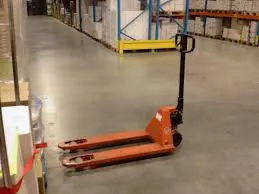


The Working Principle of Chain Hoists
Chain hoists are essential tools widely used in various industries for lifting and lowering heavy loads. Their efficiency and simplicity make them a preferred choice in construction sites, warehouses, and manufacturing facilities. Understanding the working principle behind a chain hoist is crucial for operators and technicians to ensure safe and effective usage.
At the heart of the chain hoist's operation is its mechanical advantage, a concept that allows a small force to lift a heavy load. The basic components of a chain hoist include a chain, a hook, a drum, a lifting mechanism, and a ratchet and pawl system. These components work together seamlessly to allow users to lift loads easily.
The Working Principle of Chain Hoists
A unique feature of chain hoists is their use of the ratchet and pawl mechanism. This system is crucial for holding the load in place once it has been lifted. When the operator stops pulling the chain, the ratchet engages with the pawl, preventing the load from falling back. This safety feature ensures that even if the operator momentarily lets go of the chain, the hoist will not release the load, thus providing a safe working environment.

One of the defining characteristics of a chain hoist is its ability to lift heavy loads with minimal effort. This is achieved through the pulley system where multiple chains and pulleys can be employed. By incorporating additional pulleys, the operator can further amplify the mechanical advantage. For instance, doubling the number of pulleys effectively halves the force needed to lift the same load. This functionality is particularly useful in scenarios where heavy machinery or construction materials must be lifted to significant heights.
The design of chain hoists allows for both manual operation and motorized versions. Manual chain hoists rely entirely on human power to lift loads, making them ideal for situations where electricity is unavailable or impractical. On the other hand, electric chain hoists use an electric motor to facilitate lifting, significantly increasing the speed and efficiency of operations. Electric hoists are particularly advantageous in high-volume applications or environments requiring frequent lifting.
Safety is a paramount concern when using chain hoists, and operators must adhere to guidelines and best practices to mitigate risks. Regular inspections and maintenance of the hoist’s components, especially the chain and ratchet mechanism, are essential for preventing accidents. Operators should also be trained in how to properly use the equipment, including understanding the weight limits and load balancing techniques to avoid tipping or overloading the hoist.
In conclusion, the working principle of chain hoists is rooted in fundamental mechanical concepts, making them powerful tools for lifting heavy loads efficiently and safely. By utilizing the advantages of mechanical leverage and incorporating safety mechanisms like the ratchet and pawl, chain hoists have become indispensable in numerous industrial applications. Whether in manual or electric form, understanding the operational principles of chain hoists is vital for ensuring safety and productivity in any lifting operation.



